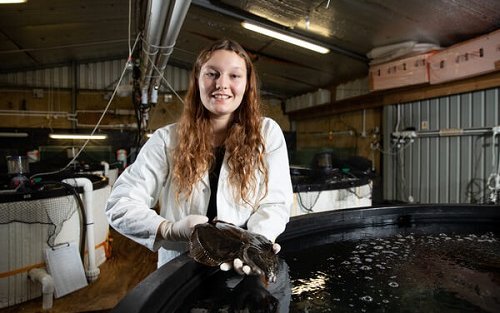An artificial breeding program for yellowbelly flounder (Rhombosolea leporina), known as Pātiki, was started by researchers from the University of Waikato this month. Forty-two Pātiki, netted from the Tauranga Harbour and housed in tanks at Toi Ohomai’s Aquaculture Facility, are its foundation breeding stock.
Pātiki does not easily breed in captivity, but researchers plan to use a gonadotropin-releasing hormone analog (GnRHa), to encourage the fish to spawn in tanks during their normal winter breeding season.
The research is part of the Government’s Sustainable Seas, National Science Challenge, designed to develop New Zealand’s Blue Economy, including growing aquaculture industry to a $3 billion industry by 2035. “Aquaculture is an industry that is already dominated by corporate businesses because of the generally high setup costs. Rural coastal communities, who have the land, are generally excluded because of the high set-up costs,” said University of Waikato Master of Science student, Brooke Ellis-Smith.
Farming Pātiki on land could be as simple as constructing shallow raceways to breed them in and they return a similar or higher value than whole snapper per kilo, up to $26/kg, making it a lucrative business, researcher said. “If we’re successful we could farm them a lot more economically and sustainably and by turning it into a viable industry, we would also take the pressure off wild stocks and create local jobs. There would also be the potential to restock fish back into the wild.”
Brooke said the type of land-based fish farming they are proposing would also sit well alongside the growing seaweed aquaculture industry. “Fish aquaculture can put a lot of nutrients in the water, but it could be partnered with a seaweed algal pond that could filter the water and produce a high-value organic fertilizer,” said Brooke.













